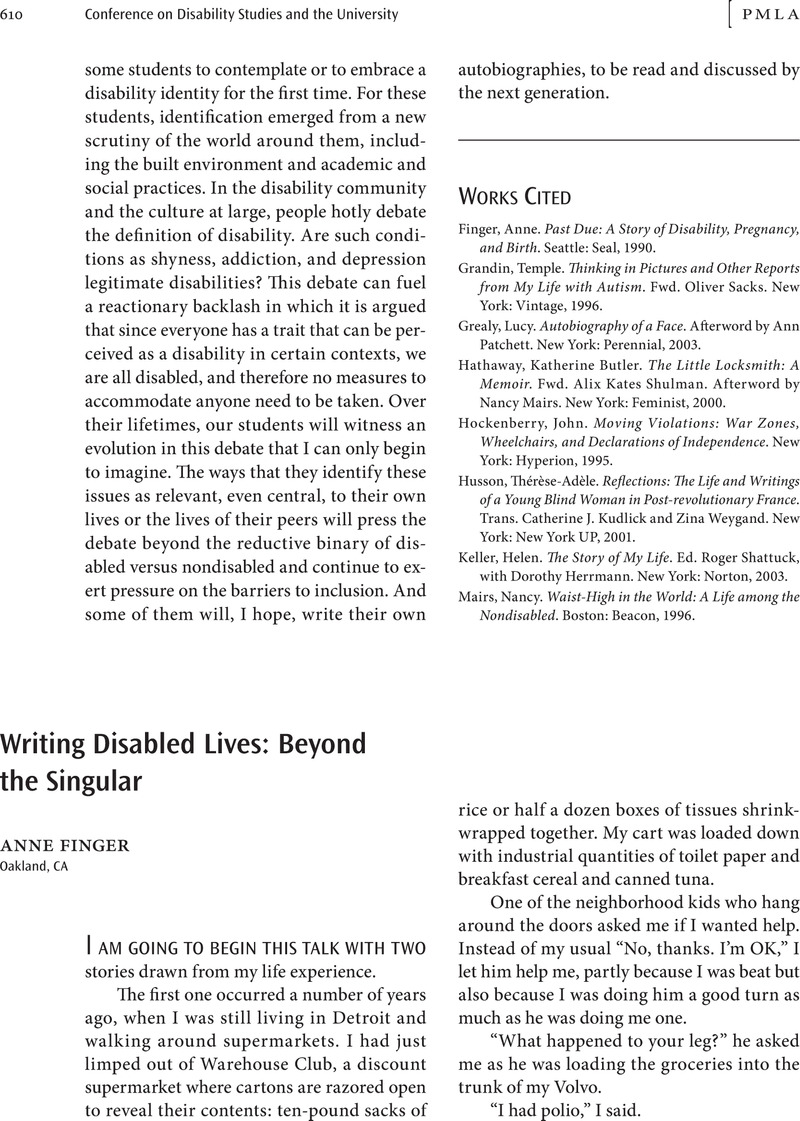Crossref Citations
This article has been cited by the following publications. This list is generated based on data provided by Crossref.
Torrell, Margaret Rose
2011.
Plural Singularities: The Disability Community in Life-Writing Texts.
Journal of Literary & Cultural Disability Studies,
Vol. 5,
Issue. 3,
p.
321.
Barrett, Timothy
2014.
De-individualising autobiography: a reconsideration of the role of autobiographical life writing within disability studies.
Disability & Society,
Vol. 29,
Issue. 10,
p.
1569.
Stephenson, Jonathan
2019.
Learning to walk: memory, disability and fragmentary development in Stewart Parker’sHopdance.
Irish Studies Review,
Vol. 27,
Issue. 1,
p.
128.



